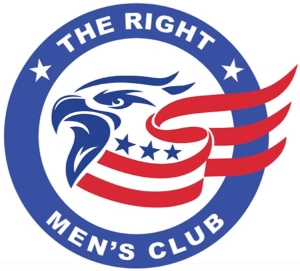The Origins of Reagan’s Missile Defense Shield Turn 50
Article by our February speaker Gene Kopelson

As President Trump returns home from his successful trip to Asia, America and her Asian allies face the continued specter of North Korea fulfilling its threats to launch nuclear-tipped intercontinental ballistic missiles.
A major component of our present defenses is the latest generation of our antimissile defense shield, proposed by President Ronald Reagan in the early 1980s as his Strategic Defense Initiative (SDI). But few realize just how long Reagan had pushed for America to create such a workable defense shield: In fact, it was 50 years ago this month.
In late September 1967, California’s Republican governor, Ronald Reagan, was flying east after a successful campaign stop in his home state of Illinois. Reagan was some ten months into his first presidential campaign, which had begun only a few weeks after winning the governorship the prior November. Reagan was to meet the all-important senator from South Carolina, Strom Thurmond, who was about to release his own autobiography, edited by conservative icon Lee Edwards. One of Thurmond’s favorite topics was antiballistic missiles.
As Reagan landed, Time hit the newsstands with a cover story on a possible American defensive missile shield aimed to protect the United States. Both land-based and space-based defensive missiles were envisioned. The article also revealed that Soviets were already completing their own defensive missile shield around Moscow, and the Johnson administration felt that all that America could do was to design our own system to prevent a Chinese attack. Thurmond later would tell candidate Richard Nixon that his, Thurmond’s support, was dependent on whether Nixon would agree to fund such a defense program, so it is highly likely that Thurmond discussed it with Reagan as well.
A few weeks later at a campaign stop in Seattle on November 10, the press asked Reagan as to whether America should match the Soviets’ expenditure for weapons in space. Reagan’s answer is noteworthy:
“I am one who has followed with interest the discussion in the press, and in magazine articles, and so forth, statements and interviews by various people associated with both the military and space … Perhaps we are understating and underspending in the space program with regard to the military possibilities of space.”
Clearly, Reagan had been processing the idea of a missile defense shield over many weeks. But as a potential president of the United States come January 1969, he wanted to learn much more. He had read voraciously on the subject but wanted to see things first hand. Fortunately, the exact cutting edge research center was just around the corner from the gubernatorial mansion in Sacramento. Reagan had his staff arrange a private gubernatorial visit to America’s Lawrence-Livermore National Laboratory.
Dr. Edward Teller was the physicist in charge of developing America’s possible defensive missile shield.
Reagan’s visit was not a publicity stunt for a brief time. Instead, Reagan spent many hours there and was without the press. Teller showed Reagan all the various projects. Teller recalled that Reagan was a careful listener who asked a dozen questions which were thoughtful and to the point.
During the third week of July 1968, a short national debate occurred about America signing an Anti Ballistic Missile (ABM) Treaty with the Soviet Union. In the treaty, Moscow could keep its missile shield but the U.S. would forgo any further development. Dr. Teller testified before the Senate Foreign Relations Committee and urged that America not give up its plans to develop an antimissile shield. But the strongest words came in Amarillo from candidate Reagan:
“In recent days there have been big smiles in the Kremlin… But I wonder if they are smiling or laughing at us? We are now ready to talk a nuclear weapon treaty that will stop us from protecting our cities, as theirs are already protected on an anti-ballistic missile program.”
Reagan went on tearing into the Soviet Union as a country that has broken “more than 50 treaties” and feels it can break any treaty when it fits its national interests. He almost used the words, “Evil Empire.”
For candidate Reagan in 1968, the ABM treaty would pass, and Reagan’s idea of a missile defense shield would lie dormant for a decade and a half until President Reagan again would meet with Dr. Teller and SDI would be proposed. Despite Democrats’ scoffing at the idea and attempts to defeat any funding for it, resolute Reagan would stand firm for his idea, even when it would mean the breakdown of negotiations with Gorbachev in Reykjavik.
In the second decade of the twenty-first century, America is facing the twin nuclear-tipped missile threats from North Korea and Iran. The heart of our and our allies’ defenses owes its existence to the foresight of Ronald Reagan fifty years ago.
Gene Kopelson is the author of “Reagan’s 1968 Dress Rehearsal: Ike, RFK, and Reagan’s Emergence as a World Statesman” (Figueroa Press, 2016) and has published about Reagan’s 1966 successful gubernatorial campaign with Americans of Mexican descent. To read more of his reports, Go Here Now.

Leave a Reply
Want to join the discussion?Feel free to contribute!